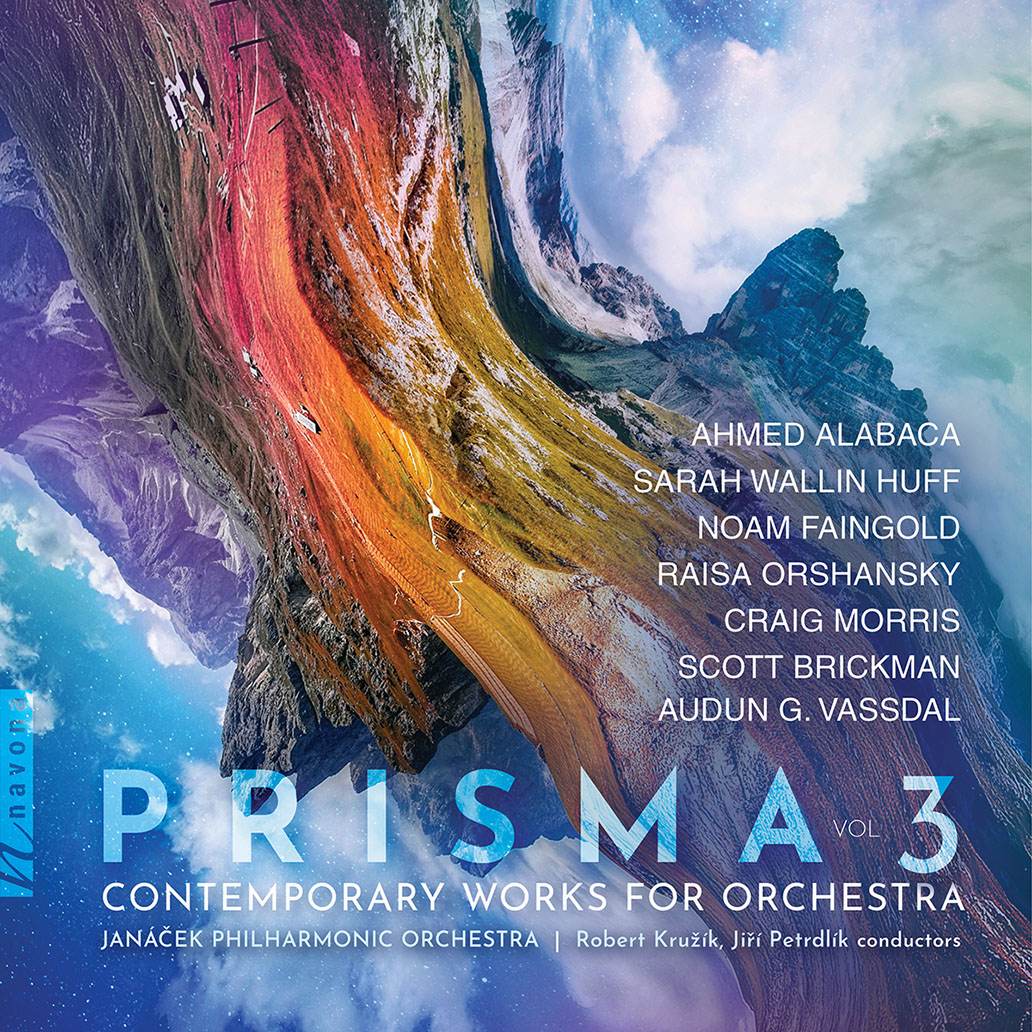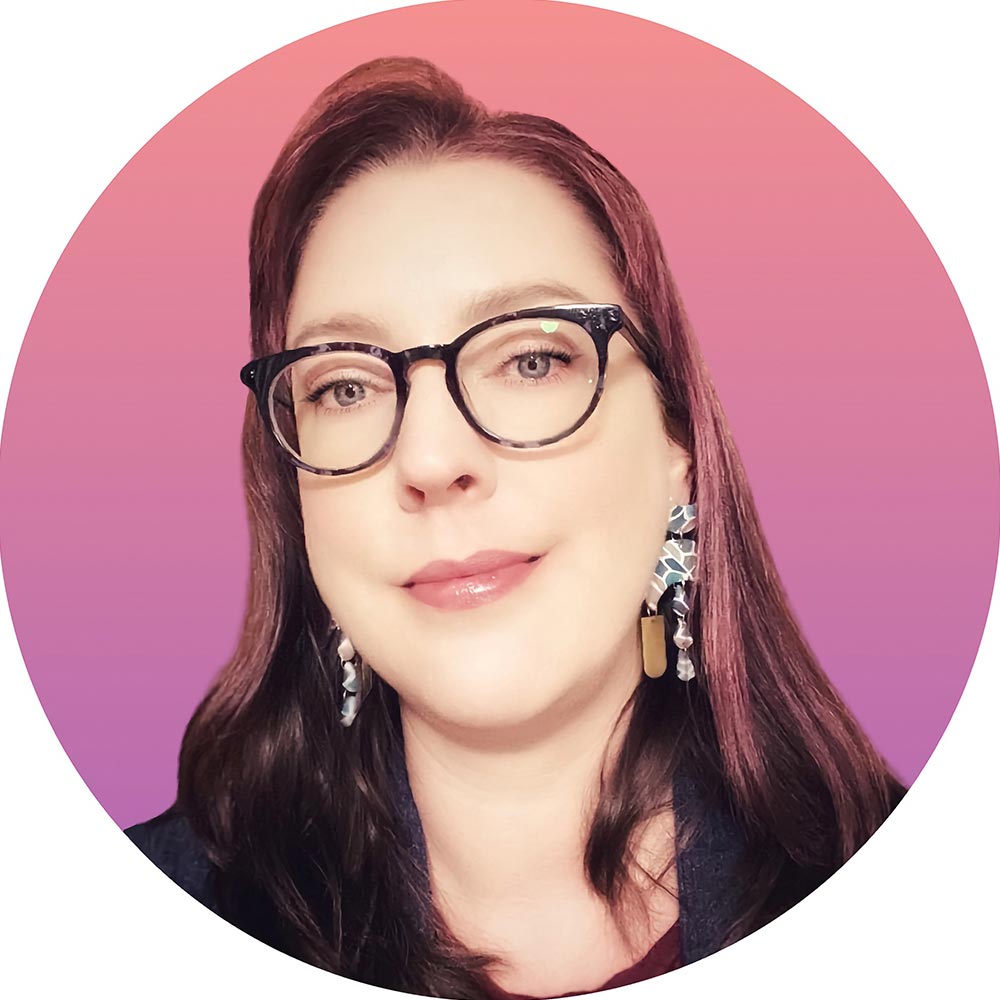
Featuring the works of seven composers, including Sarah Wallin Huff, PRISMA VOL. 3 follows up the success of the first two PRISMA installments with symphonic music that is both innovative and deeply alluring.
Today, Sarah is our featured artist in “The Inside Story,” a blog series exploring the inner workings and personalities of our composers and performers. Read on to discover how Disneyland helped solidify her desire to create music as a kid…
Who was your first favorite artist(s) growing up?
Growing up, I loved New Age artists like Yanni, Enya, George Winston, and Amethystium. I also loved the Top 40 hits of the 80s and early 90s, and I enjoyed movie soundtracks from that period and earlier (for example, the music from Apollo 13, Jerry Goldsmith’s original music for Legend, and Herrmann’s work for Vertigo are a few of my favorites). Rachmaninoff’s third piano concerto and Ravel’s Daphnis et Chloé were also examples of my top favorite Classical works to listen to regularly.
When did you realize that you wanted to be an artist?
As far back as I can remember, I enjoyed making up my own little melodies, singing along (and in harmony) to recordings, and fooling around on my grandparents’ old upright piano. By age 9 I was singing in my school choir and by age 10 I started taking violin lessons; additionally, I played the bass bells in our church’s handbell choir. Between all these experiences, I gained a lot of insight into the workings and language of music. When I was 13, I composed my first “real” work: an intermediate 2-part choir piece with piano accompaniment for my junior high choir. My teacher enrolled my piece in the Disneyland Challenge, and when it won a finalist position, that moment gave me the encouragement and motivation to pursue further music creation.
What was your most unusual performance, or the most embarrassing thing that happened to you during a performance?
One of my most embarrassing performance moments happened because the music director of our church at the time decided to do a surprise performance of an early string trio of mine during a regular service. I was very young and inexperienced, and, while I do appreciate the attempt to have my work performed early on, he had prepared everything without my knowledge or input. During that morning’s performance, the violinist had somehow gotten off track and remained two full bars behind the rest of the group for the remainder of the work— resulting in the most dissonant sounds! I was so embarrassed and didn’t know whether to get up and stop the performance or not. Being shy, I awkwardly remained in my seat hoping that nobody would know it was my piece that was being played. But I learned some valuable lessons—mainly, to be a part of the preparations of my own works whenever I can and to not be afraid to speak up when something is wrong so that it can be fixed.
What is your guilty pleasure?
I don’t know if I’d call them “guilty” pleasures but some of my favorite things in life include enjoying hoppy, craft IPAs and playing Mario Kart 8.
If you could make a living at any job in the world, what would that job be?
I have a hard time with the “making a living” part of adult life. I love to create both music and stories, and if I could magically make a living simply by churning out the content I want to churn out (and regularly hear my work performed), I would. But I’m grateful that the other things I do to supplement the costs of daily living are also things I enjoy, like teaching students about music and collaborating with colleagues on artistic projects.
If you could spend creative time anywhere in the world, where would it be?
I would love to spend creative time out in the wilderness of the Big Island of Hawaii. I adore all sorts of natural landscapes, but the Big Island has a certain calming spirit in the air for me, and I think I could capture a lot of fresh inspiration while creating new works there.
If you could instantly have expertise performing one instrument, what instrument would that be?
The guitar—or, better yet, the banjo! I wish I could just pick one up and be able to strum away, even badly. My violin-inclined brain has trouble adjusting to the technical layout of the guitar.
What was your favorite musical moment on the album?
I think my favorite moment on this album is starting from around the 6:30 mark of The Dark Glass Sinfonia and going through the first three minutes of The Defiant Poet. There’s a heavy, organ-like grandeur to the texture of the orchestra at the end of the Sinfonia that seems to melt beautifully into the gorgeous opening of Noam Faingold’s work.
What does this album mean to you personally?
Personally, I’m simply humbled and grateful to have the opportunity to hear and share my work, so expertly done by PARMA Recordings. Hearing the notes that were once only on a page come to life by these excellent musicians helps give what I do meaning. It brings me so much joy!
Is there a specific feeling that you would like communicated to audiences in this work?
The Dark Glass Sinfonia feels for me like an unfolding journey through life and the mind. It begins in dark, ambiguous mists that gradually part to allow the light of harmony and direction shine. As we move toward that light, we gain a sense of confidence and spontaneity, and there seems to be an eager bounce in our step as we meet friend and foe and explore the complicated world around us. Finally, approaching the end of the work, we look back and try to make sense of all that we’ve experienced, encountering the grand, open expanse of consciousness that grants us an outlook of wonder.

PRISMA VOL. 3 featuring The Dark Glass Sinfonia by Sarah Wallin Huff is now available to stream or purchase through Navona Records. Click here to explore this new album.

Sarah Wallin Huff is a music lecturer at California Polytechnic University of Pomona, teaching “History of Technology in Music,” for which she published an original textbook with Great River Learning in 2019. She received her M.A. in Music Composition at Claremont Graduate University in 2008, and was the Professor of Composition and Advanced Theory — as well as conductor of the Chamber Ensemble — at The Master’s University in Santa Clarita from 2012-2016.
